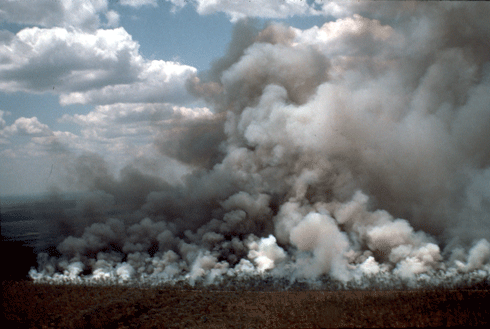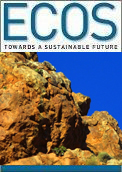
|
Published: 27 February 2012
New methodology for carbon credits from savanna fire management
Indigenous land managers and farmers in northern Australia will now be able to generate revenue for reducing carbon emissions thanks to a new savanna fire management methodology, developed by the federal government in consultation with Indigenous groups and CSIRO.
Across Australia’s north, the Indigenous tradition of landscape burning continues, and fire has been adopted as a management tool by northern Australian land managers.
Fire is used to manage:
-
natural habitats for biodiversity conservation
-
native pastures for cattle production
-
the control of invasive plants.
The federal government has launched a new approved ‘methodology’ under its Carbon Farming Initiative, to allow farmers and landholders to receive economic benefit from savanna burning strategies that are carbon-abating.
Using the savanna burning methodology, Indigenous land managers and farmers will shift the timing of savanna burning to earlier in the dry season and reduce the area burnt. This reduces the amount of fuel burnt, which reduces emissions of methane and nitrous oxide – potent greenhouse gases.
‘Carbon farming opens up a myriad of opportunities across the three northern jurisdictions,’ says Simon Crean, Minister for Regional Australia, Regional Development and Local Government.
According to the Parliamentary Secretary for Climate Change and Energy Efficiency, Mark Dreyfus, ‘the methodology will enable Indigenous land managers and farmers in northern Australia to use traditional fire management practices to create jobs and sustainable incomes “on country” ’.
‘Projects like these, and others to be developed under the CFI, show the potential for jobs creation through activities to address climate change,’he says.
The savanna burning methodology was developed by the Federal Government in close consultation with Indigenous groups and CSIRO, and assessed by the independent Domestic Offsets Integrity Committee.
Support for Indigenous land managers using the savanna burning methodology will also be provided supported through the federal government’s Indigenous Carbon Farming Fund, providing capacity building, business development support, and expert legal advice.
The methodology and information on the Carbon Farming Initiative is available on the Department of Climate Change and Energy Efficiency website.
Source: Department of Climate Change and Energy Efficiency




